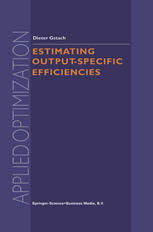

Most ebook files are in PDF format, so you can easily read them using various software such as Foxit Reader or directly on the Google Chrome browser.
Some ebook files are released by publishers in other formats such as .awz, .mobi, .epub, .fb2, etc. You may need to install specific software to read these formats on mobile/PC, such as Calibre.
Please read the tutorial at this link: https://ebookbell.com/faq
We offer FREE conversion to the popular formats you request; however, this may take some time. Therefore, right after payment, please email us, and we will try to provide the service as quickly as possible.
For some exceptional file formats or broken links (if any), please refrain from opening any disputes. Instead, email us first, and we will try to assist within a maximum of 6 hours.
EbookBell Team

0.0
0 reviewsThe present book is the offspring of my Habilitation, which is the key to academic tenure in Austria. Legal requirements demand that a Ha bilitation be published and so only seeing it in print marks the real end of this biographical landmark project. From a scientific perspective I may hope to finally reach a broader audience with this book for a criti cal appraisal of the research done. Aside from objectives the book is a reflection of many years of research preceding Habilitation proper in the field of efficiency measurement. Regarding the subject matter the main intention was to fill an important remaining gap in the efficiency analysis literature. Hitherto no technique was available to estimate output-specific efficiencies in a statistically convincing way. This book closes this gap, although some desirable improvements and generalizations of the proposed estimation technique may yet be required, before it will eventually establish as standard tool for efficiency analysis. The likely audience for this book includes professional researchers, who want to enrich their tool set for applied efficiency analysis, as well as students of economics, management science or operations research, in tending to learn more about the potentials of rigorously understood efficiency analysis. But also managers or public officials potentially or dering efficiency studies should benefit from the book by learning about the extended capabilities of efficiency analysis. Just reading the intro duction may change their perception of value for money when it comes to comparative performance measurement.